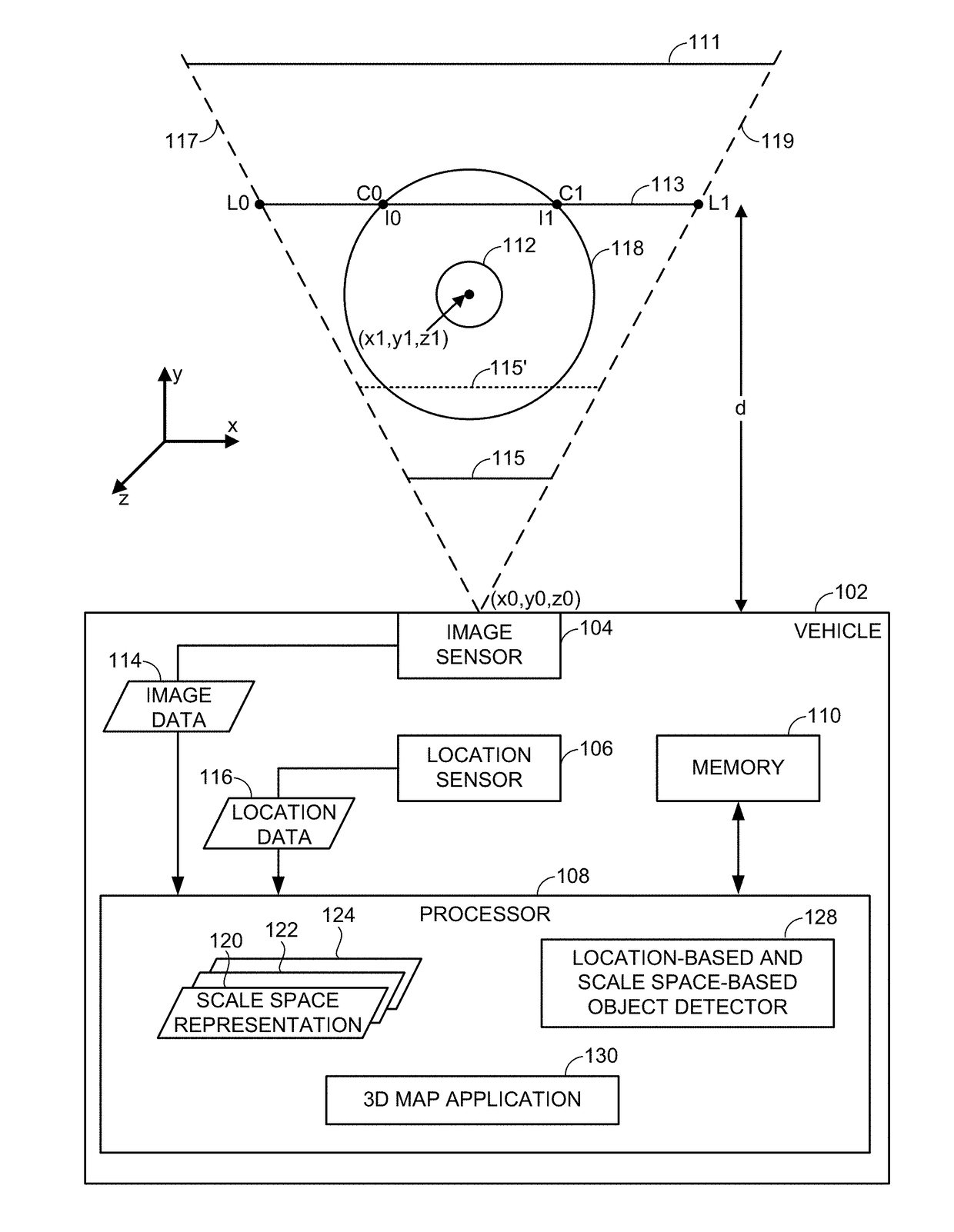Object detection using location data and scale space representations of image data
a technology of image data and location data, applied in the field of object detection using location data and scale space representations of image data, can solve the problems of unreliable detection object locations, slow and ineffective image-based object detection, and frustrate the intended purpose of object detection, so as to achieve less computational complexity
- Summary
- Abstract
- Description
- Claims
- Application Information
AI Technical Summary
Benefits of technology
Problems solved by technology
Method used
Image
Examples
Embodiment Construction
[0022]FIG. 1 depicts a particular illustrative embodiment of a system that is configured to perform object detection. In the example of FIG. 1, the object detection is performed at a vehicle 102. However, it should be noted that the present disclosure is not to be limited as such. The object detection devices, methods, systems, etc. disclosed herein can be implemented in alternative environments to detect objects in traffic, in a field of view, etc. For example, one or more functions described herein may be implemented in electronic devices, mobile devices, gaming consoles, automotive system consoles (e.g., ADAS), wearable devices (e.g., personal mounted cameras), head mounted displays, etc. Additional examples include, but are not limited to, robots or robotic devices, unmanned aerial vehicles (UAVs), and drones. In the example of FIG. 1, the vehicle 102 may be a motor vehicle (e.g., a car, a truck, a motorcycle, a bus, or a train), a watercraft (e.g., a ship or a boat), an aircraf...
PUM
 Login to View More
Login to View More Abstract
Description
Claims
Application Information
 Login to View More
Login to View More - R&D
- Intellectual Property
- Life Sciences
- Materials
- Tech Scout
- Unparalleled Data Quality
- Higher Quality Content
- 60% Fewer Hallucinations
Browse by: Latest US Patents, China's latest patents, Technical Efficacy Thesaurus, Application Domain, Technology Topic, Popular Technical Reports.
© 2025 PatSnap. All rights reserved.Legal|Privacy policy|Modern Slavery Act Transparency Statement|Sitemap|About US| Contact US: help@patsnap.com



